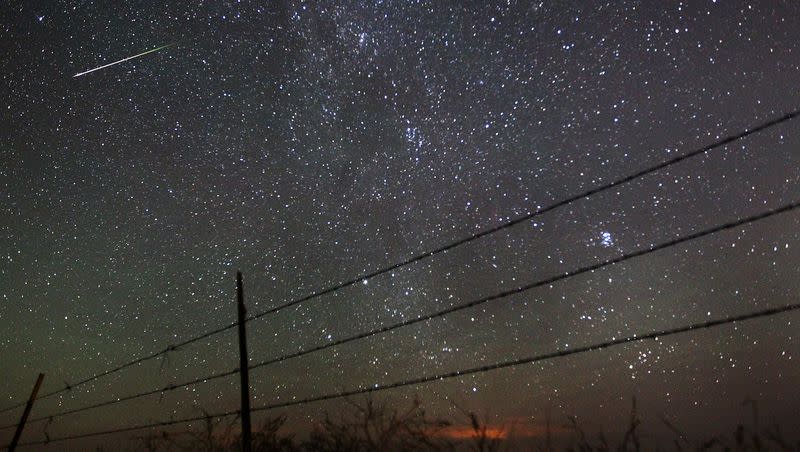How to see the Halley’s comet meteor shower this weekend

- Oops!Something went wrong.Please try again later.
The Orionid meteor shower, created by debris from Halley’s comet, will reach peak visibility the night of Oct. 20–21.
The meteor shower occurs annually and is active for nearly two months. This year, it began on Sept. 26 and is expected to continue until Nov. 22, per Forbes. Read on to learn more about this phenomenon and the best way to see it.
What is the Orionid meteor shower?
Meteor showers, also called “shooting stars,” occur when objects in space enter Earth’s atmosphere, according to NASA. Most of the material catches fire and is vaporized as it travels through the atmosphere, which is what causes their bright lights.
The Orionid meteor shower is one of two meteor showers caused by space debris left in the trail of Halley’s comet. The other, the Eta Aquarids, occurs in late spring.
The Orionid is so named because it appears to originate within the Orion constellation. The meteor shower will appear just above the three stars that make up Orion’s belt.
What is Halley’s comet?
Halley’s comet is a short-period comet known for being the only comet that can be seen twice in one human lifetime.
Its appearances have been recorded for thousands of years, but it wasn’t until 1705 that English astronomer Edmond Halley theorized it was one recurring comet, per NASA.
The debris causing this year’s meteor shower was left around 390 B.C., according to Forbes.
Halley’s comet was last visible from Earth in 1986. This December, it will reach the halfway mark of its journey and will begin traveling back toward our planet. The comet will pass Earth once more in 2061.
What is the best way to see the 2023 Orionid meteor shower?
The moon will be in its first quarter this weekend, meaning that moonlight may partially inhibit visibility of the shower. However, the moon will set around midnight, darkening the night sky to optimal viewing conditions.
Visibility will depend on a number of factors, including light pollution and cloud cover. Check your local weather to see if clear skies are expected. If you live in an area with higher light pollution, such as a city or other urban area, consider driving to a more remote, rural location. The sky will appear darker and give you a better view of the shower.
The shower will not occur all at once and should remain visible until sunrise begins to lighten the sky. If you stay up past midnight and find an area to sit back and relax with a clear view of the night sky, the American Meteor Society estimates you can expect to see anywhere from 10 to 20 meteors per hour.

